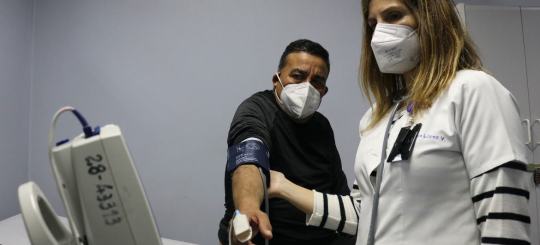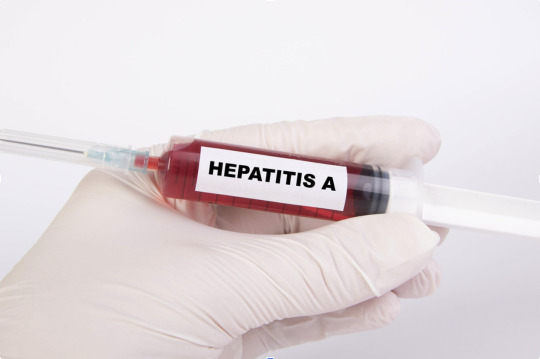#hepatitis A
Text

#Robert Rohde#vaccines#vaccines work#vaccination#measles#diphtheria#typhoid fever#whooping cough#smallpox#tuberculosis#poliomyelitis#meningococcus#mumps#rubella#hepatitis a#hepatitis b#chickenpox#medicine#science#science works#anti vaxxers#anti vaccination#anti vax movement#disease enthusiasts#religion is a mental illness
1K notes
·
View notes
Text
“Can you eat ass?”
Believe it or not, this is actually asking about (hepatitis) vaccination status.
#medicine#med school#medblr#healtcare#nursing#odontology#hepatitis#vaccination#hepatitis a#we are a mess
24 notes
·
View notes
Text
Medicine Tourism
-
Questions Starting With
“Where” & “Mavyret”
Introduction
Mavyret is a treatment for people with chronic hepatitis C genotype 1-6.
It’s a prescription medicine that you can take at home, and you’ll only
need to take it for 8 or 12 weeks. If you have any questions about
Mavyret, please check out the list of frequently asked questions below:
Where is Mavyret Available?
Mavyret is a prescription medication that is available at most
pharmacies. You can also get more information about Mavyret by
searching online. In some cases, it may not be possible to purchase
Mavyret at your local pharmacy. If you have any questions about whether
or not your particular pharmacy carries this product, please contact them
directly for more information on their availability and pricing.
Where Can I Get More Information About
Mavyret?
We want to be as helpful as possible. Please call 1-833-Mavyret or visit
our website for any questions you might have about Mavyret drug
treatment options, payment plans and more. You can also get in touch
with us via social media on Facebook, Twitter and LinkedIn. We also
have a YouTube channel where you can watch videos about Mavyret and
our work here at the clinic! Sign up for our newsletter so that we can
keep you posted on new developments in the field of addiction medicine.
Visit our blog to learn more about what's happening with Mavyret!
Where Can I Find Out More About Mavyret?
Mavyret is the first hepatitis C drug to combine glecaprevir and
pibrentasvir. It’s an oral pill that can be taken with or without food and is
available in two dosages: 50 mg/80 mg and 50 mg/100 mg.
If you have hepatitis C and are interested in learning more about
Mavyret, call 1-800-399-2843 to speak with a healthcare professional
who can answer questions you may have and help you determine if this
medication is right for you.
Where Should I Go If I Need More Help
With My Hepatitis C?
If you have further questions about hepatitis C or Mavyret, please talk to
your healthcare provider. They will be able to provide more detailed
information about the benefits and risks of taking Mavyret. You can also
visit the Mavyret website for more information on this medication.
You can also call the toll-free Helpline at 1-844-4Mavyret (1-844-462-
9837). The helpline is available from 9AM to 8PM Eastern Time, seven
days a week.
What Is The Recommended Dosage Of
Mavyret?
Mavyret is a once-daily tablet that should be taken with or without food.
You may notice that your doctor will increase the dose of Mavyret slowly
over time until you reach a maintenance dose. This helps to lessen side
effects and make sure you’re getting enough medication to keep your
hepatitis C under control.
Mavyret Is Available At Most Pharmacies &
You Can Find Out More Here!
Mavyret is available at most pharmacies and you can find out more here.
Mavyret is a prescription only medication, so you should talk to
your doctor or healthcare provider before starting treatment with
it.
Not all countries will have access to this drug, as it's not approved
in all states/countries. If you're located in one of these areas and
would like to know if it's available there, please contact your local
pharmacy or health care provider (you'll need their help).
Conclusion
Hopefully, this post has given you some insight into "where" questions. If
there are any other topics’ you'd like us to cover in a future blog post,
please let us know! Thanks for reading!
3 notes
·
View notes
Text
Hepatitis killing thousands daily, WHO warns in new report.

The number of lives lost due to viral hepatitis infections is increasing and already accounts for 3,500 deaths daily, according to a report by the World Health Organization (WHO) released on Tuesday.
The disease is the second leading infectious cause of death globally, with 1.3 million deaths per year, the same as tuberculosis, another top infectious killer, according to the World Health Organization (WHO) 2024 Global Hepatitis Report.
“This report paints a troubling picture,” said WHO Director-General Tedros Adhanom Ghebreyesus. “Despite progress globally in preventing hepatitis infections, deaths are rising because far too few people with hepatitis are being diagnosed and treated.”
Swift course correction
Even though better tools for diagnosis and treatment are available and product prices are decreasing, testing and treatment coverage rates have stalled, the UN health agency stated in the report, released at the World Hepatitis Summit.
But, reaching the WHO elimination goal by 2030 should still be achievable, if swift action is taken now, the agency said.
“WHO is committed to supporting countries to use all the tools at their disposal – at access prices – to save lives and turn this trend around,” the UN health agency chief said.

The waiting area at a health clinic in Rwanda. Hepatitis B birth-dose immunization coverage is only 45 per cent globally, with less than 20 per cent coverage in the WHO African region.
Spike in deaths
More than 6,000 people are getting newly infected with viral hepatitis each day, according to the report. New data from 187 countries show that the estimated number of deaths from viral hepatitis increased from 1.1 million in 2019 to 1.3 million in 2022. Of these, 83 per cent were caused by hepatitis B and 17 per cent by hepatitis C. Updated WHO estimates indicate that 254 million people live with hepatitis B and 50 million with hepatitis C in 2022. Half the burden of chronic hepatitis B and C infections is among people 30 and 54 years old, with 12 per cent among children. Men account for 58 per cent of all cases.
Gaps in diagnosis and treatment
Across all regions, only 13 per cent of people living with chronic hepatitis B infection had been diagnosed and approximately three per cent, or seven million, had received antiviral therapy at the end of 2022, falling far below global targets to treat 80 per cent of people living with chronic hepatitis B and hepatitis C by 2030. The burden of viral hepatitis also varies regionally. The WHO African Region bears 63 per cent of new hepatitis B infections, yet despite this burden, only 18 per cent of newborns in the region receive the hepatitis B birth-dose vaccination. In the western Pacific region, which accounts for 47 per cent of hepatitis B deaths, treatment coverage stands at 23 per cent among people diagnosed, which is far too low to reduce mortality. In addition, despite the availability of affordable generic viral hepatitis medicines, many countries fail to procure them at these lower prices.

© PAHO
In Chile, new hepatitis treatments mean around 98 per cent of patients recover completely.
Eradicating the epidemic
The WHO report outlines a series of actions to advance a public health approach to viral hepatitis, designed to accelerate progress towards ending the epidemic by 2030. They include expanding access to testing and diagnostics, strengthening primary care prevention efforts and shifting from policies to implementation for equitable treatment. But funding remains a challenge, the agency said, with current levels insufficient to meet the needs. WHO said this arises from a combination of factors, including limited awareness of cost-saving interventions and tools and competing health priorities. The new report also highlights strategies for countries to address these inequities and access the tools at the most affordable prices available.
SDG 3: HEALTHIER GLOBAL POPULATION
Promote mental health and wellbeing and strengthen the prevention and treatment of substance abuse
Reduce the number of deaths and illnesses from pollution, contamination and tobacco
Achieve universal health coverage and provide access to affordable, essential vaccines and medicines
Reduce global maternal mortality rate to less than 70 per 100,000 live births and under-five mortality to at least 25 per 1,000 live births
End epidemics of AIDS, tuberculosis and malaria and combat hepatitis and other communicable diseases
Sustainable development hinges on ensuring healthy lives and promoting wellbeing at all ages.

#world health organization (who)#campaign#preventing hepatitis#viral hepatitis infections#cost-saving interventions#generic viral hepatitis medicines#hepatitis c#hepatitis a#hepatitis b
0 notes
Text

Hepatitis in Pediatric Patients:
Children represent a vulnerable demographic susceptible to hepatitis, displaying unique patterns of transmission, clinical manifestations, and long-term consequences. Hepatitis A, primarily spread through fecal-oral contamination of food and water, poses a significant threat to children, often presenting as acute illness characterized by jaundice, fatigue, abdominal discomfort, and nausea. Conversely, hepatitis B, typically transmitted from mother to child during childbirth or through blood exposure, presents distinctive challenges in pediatric healthcare, necessitating timely vaccination and careful screening of high-risk infants. The evolving landscape of pediatric hepatitis highlights the critical role of comprehensive vaccination programs, early detection, and multidisciplinary care to mitigate disease impact and prevent long-term complications in children.
Hepatitis in the Adult Population:
Adults comprise a diverse group affected by hepatitis, with hepatitis B and C emerging as prominent global concerns, particularly among high-risk groups like injection drug users, healthcare professionals, and individuals with underlying health conditions. Chronic hepatitis B, prevalent in a substantial portion of adults, underscores the importance of targeted screening, early detection, and prompt initiation of antiviral therapy to prevent disease progression and reduce the risk of liver cirrhosis and cancer. Similarly, hepatitis C, once a formidable challenge with limited treatment options, has seen a significant transformation with the introduction of direct-acting antiviral agents, offering cure rates exceeding 95% and reshaping the landscape of hepatitis management in adults. However, addressing disparities in access to screening, diagnosis, and treatment remains a critical challenge, requiring concerted efforts to improve healthcare delivery and outcomes globally.
Diagnosis and Management:
The diagnosis of hepatitis requires a systematic approach involving clinical assessment, laboratory tests, imaging studies, and histopathological examination to determine the underlying cause, assess disease severity, and guide treatment decisions. Blood tests, including serological markers and viral load assays, are essential for distinguishing between acute and chronic hepatitis, identifying viral strains, and monitoring treatment response. Imaging techniques such as ultrasound, CT scans, and MRI provide valuable information on liver structure, blood flow, and the presence of complications such as cirrhosis and liver cancer. Although invasive, liver biopsy remains valuable in certain cases, offering histological confirmation of the diagnosis and guiding treatment strategies.
Treatment options for hepatitis encompass a variety of pharmacological interventions, including antiviral drugs, immunomodulatory therapy, and supportive care measures to alleviate symptoms and promote liver health. In acute hepatitis, conservative management with rest, hydration, and dietary adjustments is often sufficient, with close monitoring of liver function and symptoms. Chronic hepatitis requires a proactive approach aimed at achieving sustained viral suppression, halting disease progression, and reducing the risk of complications. Antiviral medications targeting specific viral enzymes have revolutionized treatment, offering high efficacy and shorter durations compared to conventional therapies. Additionally, immunomodulatory agents play a role in managing autoimmune hepatitis and hepatitis associated with systemic conditions.
Early diagnosis and management of hepatitis is possible by undergoing a regular full body health checkup at a good hospital.
#regular health checkups#full body health checkup#hepatitis#hepatitis A#hepatitis B#hepatitis C#pediatric hepatitis#chronic hepatitis#blood tests#CT scans#MRI scans#liver biopsy#liver health#acute hepatitis#antiviral drugs
0 notes
Quote
Hepatitis A, B, and c up and down It's never straight up and down
ownder
0 notes
Text
The world is changing but nobody important wants to notice
Funny how some things never change. Sixty years ago I was busy with a fork and wheelbarrow cleaning out a heifer shippon. I was no more than eight at the time. This morning, there I was, with fork and wheelbarrow, mucking out heifers again. Admittedly my younger self would have appreciated the developments in muck fork technology. The one I’m using now is lighter, with a hollow metal shaft. The…

View On WordPress
0 notes
Text
Liver function tests can help identify a wide range of liver-related conditions and provide valuable information about the health and function of the liver. Some of the conditions that can be identified or assessed using liver function tests include:
Hepatitis: Liver function tests can detect inflammation of the liver caused by various forms of hepatitis, including hepatitis A, B, C, and others.
Cirrhosis: Elevated liver enzymes (such as ALT and AST) and low levels of albumin may indicate chronic liver damage and cirrhosis, which is scarring of the liver tissue.
Fatty liver disease: Elevated ALT and AST levels can be indicative of non-alcoholic fatty liver disease (NAFLD) or alcoholic liver disease.
Alcohol-induced liver damage: Chronic alcohol consumption can lead to elevated liver enzymes and other abnormalities in liver function tests.
Biliary obstruction: High levels of alkaline phosphatase (ALP) and total bilirubin can suggest problems with the bile ducts, such as blockages or gallstones.
Liver tumors: Liver function tests may show abnormalities in cases of liver tumors, such as hepatocellular carcinoma.
Drug-induced liver injury: Some medications can lead to liver damage, which may be detected through changes in liver function tests.
Autoimmune liver diseases: Conditions like autoimmune hepatitis and primary biliary cholangitis may be identified through liver function tests, along with additional specific tests.
Wilson's disease: Elevated liver enzymes and low serum ceruloplasmin levels can be indicators of Wilson's disease, a rare genetic disorder that causes copper buildup in the liver.
Hemochromatosis: Elevated ferritin levels may suggest hemochromatosis, a condition characterized by excessive iron absorption and accumulation in the liver.
Gilbert's syndrome: This is a benign genetic condition that may lead to mild increases in bilirubin levels without causing any serious liver damage.
Liver injury from other medical conditions: Liver function tests can provide information about the impact of other medical conditions, such as heart failure, sepsis, or certain infections, on the liver.
Get full body checkups at Saifee Hospital Mumbai done.
#health#liver transplant#liver cancer#liver disease#liver damage#liver#cancer#hepatica#hepatitis a#hepatitis c#hepatitis#hepatitis b#wilson disease
0 notes
Text
Hepatitis A is a highly contagious liver disease caused by the Hepatitis A virus (HAV). Its symptoms can range from a mild illness lasting a few weeks to more severe symptoms that can persist for months. This disease is primarily transmitted through contaminated water or food, but the good news is that it is easily treatable once detected. Lets deep dive into the article by Dr Ram C Soni, the Best Hepatologist in Faridabad to know the Causes, Symptoms, Treatment and Prevention of Hepatitis A.
#Best Hepatologist Doctor in Faridabad#Best Hepatologist in Faridabad#Best liver doctor in Faridabad#Hepatitis A
0 notes
Text
0 notes
Text
Hepatitis A Vaccine
HAV infection is more likely to result in significant liver disease in individuals coinfected with HBV or HCV or HEV, patients waiting for or having undergone liver transplantation, pregnant women, and people infected with HIV infection.
0 notes
Text
Hepatitis: Tipos y Prevención

View On WordPress
#como prevenir contagio de hepatitis#como prevenir la hepatitis#hepatitis#hepatitis a#hepatitis b#hepatitis c#hepatitis d#hepatitis e#sintomas de hepatitis#tipos de hepatitis
0 notes
Text
STI Index: Hepatitis A
This week’s class will be a deep dive into Hepatitis A as part of our STI Index section. Although sex isn’t the primary route of transmission now, it is still possible to contract the virus. Certain sexual acts can increase the chance of contracting Hepatitis A during sexual contact. Kinkier sex requires advanced education. Follow along as we discuss symptoms, risks, and treatment options.
Did…

View On WordPress
#Coach Catasha#HAV#Hepatitis A#sex blogger#sexually transmitted diseases#sexually transmitted infections#std#sti
0 notes
Text
Hepatitis A seroprevalence, vaccination status and demographic determinants in children and adolescents in Germany, 2014–2017, a population-based study.
Hepatitis A (HA) is caused by an infection with hepatitis A virus (HAV), which is transmitted through the fecal–oral route. In adults, the majority of infections lead to an acute symptomatic hepatitis, with the risk of severe disease increasing with age and preexisting liver disease. Young children typically remain asymptomatic or present with only mild symptoms, thereby contributing to HAV dissemination while being underrecognized in routine surveillance data. Since 2012 annual incidences of notified HA in Germany have ranged between 0.7 and 1.5 per 100,000 population1.
HAV infection is vaccine-preventable. The National Standing Committee on Vaccination is recommending HA vaccination for individuals at higher risk of HAV exposure and those with risk factors for severe disease since 1993, currently including people traveling to endemic countries, people with increased professional or sexual exposure, with repeated contact to blood products or with liver disease and residents of psychiatric or comparable institutions. In 1998, Saxony, one of the 16 federal states in Germany, implemented a universal HA vaccination recommendation for children older than 13 months.
As part of the nationwide health monitoring, the representative German Health Interview and Examination Survey for Children and Adolescents (KiGGS study) was implemented. A baseline study was conducted between 2003 and 2006 and found an overall crude HAV seroprevalence of 14%. Of those, 11% had a documented previous HA vaccination and the remaining 3% were attributed to previous HAV infection. The most recent wave was carried out between 2014 and 2017. We describe HA seroprevalence and vaccination status, estimate the prevalence of previous HAV infections of children participating in KiGGS wave, and compare the results to those of the baseline study. Besides providing an overview of the most current representative data on HA epidemiology among children and adolescents in Germany, we aim to identify groups at higher risk of infection that could benefit from public health interventions, e.g. focused HA vaccination recommendations.
0 notes
Text

What is Hepatitis A: Definition, Causes, Symptoms and Treatment
0 notes